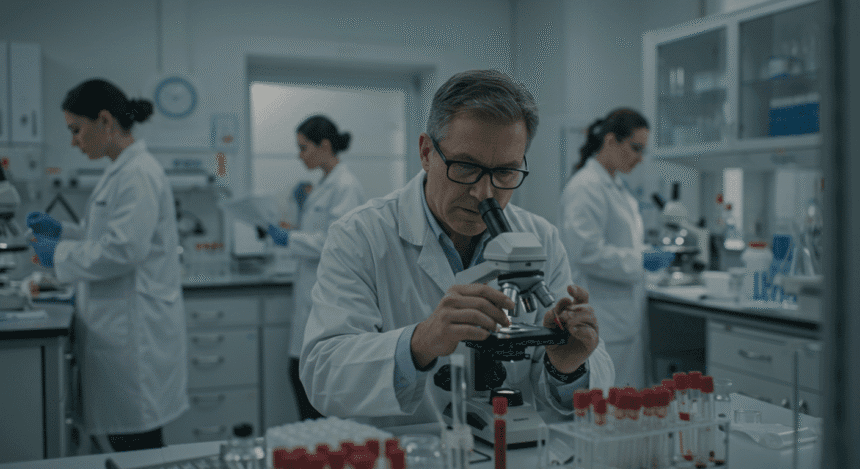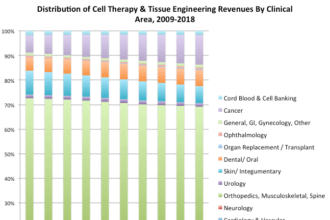Since we started Healthworks Collective, we’ve explored how technology is changing the way medical professionals approach patient care and scientific inquiry. You can now see how new digital tools are helping researchers detect patterns, flag warning signs, and diagnose with greater confidence. It is easier than ever for doctors and scientists to share findings across borders, speeding up the response to health threats and rare diseases. This blog continues that focus by looking at how modern tools are giving researchers a clearer view of the problems they aim to solve. We also talk about how technology helps everyday people as well.
The Bureau of Labor Statistics reports that the number of medical research jobs is projected to grow by 11% over the next ten years. It is a strong signal that more scientists are expected to work directly with data-driven tools and digital records. You are likely to see more collaboration between tech professionals and health experts in future studies. Keep reading to learn more.
Reducing Risks in Diagnosis
Annalisa Merelli of Stat News shared that the risk of death from false diagnosis stands at 4%, while the risk of serious injury reaches 11%. You might not realize how common diagnostic mistakes are without the support of data systems and alerts.
“iagnostic errors — that is, overlooking a disease, or diagnosing it erroneously or late — are a known occurrence in health care, and one that can have tragic effects. Yet so far there have been few attempts to quantify misdiagnoses in terms of deaths and permanent disability, and the full scale of their impact has been underestimated by the medical community, according to a 2015 report by the National Academy of Medicine,” she writes.
It is increasingly clear that digital tracking and decision support can reduce human error. You can see how this creates new pressure on clinics and hospitals to adopt better tools.
Sahalu Balarabe Junaid and his colleagues at Ahmadu Bello University published research on the expanding role of digital technology in healthcare research. There are clear signs that data processing and medical modeling are helping scientists ask more precise questions. It is common now for research teams to rely on computer-generated models before conducting human studies. You might notice how this improves early-stage results and lowers risk in clinical trials.
You often hear about wearable devices being used to track patient health, but they are also giving researchers continuous streams of data that weren’t available before. There are devices today that log blood sugar, sleep quality, heart rate, and more without needing a lab visit. It is helping researchers spot early symptoms in real-world settings rather than relying only on artificial test conditions. You could say this is a shift toward more personal and long-term tracking of human health.
There are also new AI-based systems that help read medical scans, test samples, and even summarize research papers. You may have already seen these tools in use at major hospitals or teaching centers. It is not just about speed—it also allows scientists to sort through far more material than would be possible manually. You benefit when these tools help teams get to the right answer with fewer delays.
In the world of medical research, success often depends on how clearly scientists can see what’s happening inside the body. From diagnosing diseases earlier to testing how well new treatments work, visibility is everything. The better the view, the better the outcomes, and that’s where modern research tools come into play. Today, advanced technologies are helping researchers collect, process, and interpret complex biological data like never before. Let’s explore some of the key tools helping them see the full picture, and how these innovations are reshaping the future of healthcare.
Imaging Technology at the Heart of Discovery
One of the most vital tools in clinical research is medical imaging. Technologies such as MRI (Magnetic Resonance Imaging), CT (Computed Tomography), PET (Positron Emission Tomography), and ultrasound give researchers a window into the human body without needing to perform surgery. These imaging techniques allow teams to observe changes in organs, tissues, and even cellular activity over time.
In clinical trials, imaging doesn’t just show whether a tumor is shrinking; it can reveal how the treatment is affecting the body’s systems, whether inflammation is decreasing, or if a disease is progressing. This data is crucial not only for proving the effectiveness of new drugs but also for protecting patient safety throughout the study.
Data Integration and Artificial Intelligence
High-quality imaging is only one part of the story. Researchers also rely on powerful data platforms and artificial intelligence (AI) to bring all the information together. AI algorithms can analyze thousands of images far faster than any human, spotting patterns and changes that might otherwise go unnoticed.
Machine learning tools, for instance, are being used to predict disease progression or treatment response by comparing trial images with historical data. These tools also help standardize the evaluation of imaging results across different trial sites, reducing errors and ensuring that data is consistent and reliable.
When researchers can automatically compare baseline images to follow-up scans using consistent criteria, they get a more accurate and objective picture, one that supports better decision-making at every phase of the trial.
Centralized Imaging Core Labs
Centralized imaging labs play a crucial role in helping research teams manage their imaging data effectively. These labs specialize in reviewing, processing, and interpreting the imaging results collected during trials. They ensure quality control, maintain regulatory compliance, and provide expert analysis, which is especially important when working across multiple trial sites around the world.
One such provider is Perceptive, which offers a full suite of imaging services for clinical research. Their expertise helps sponsors and investigators navigate complex imaging requirements while maintaining high standards for data quality and consistency. This kind of support is essential for translating raw image data into meaningful scientific insights.
Wearables and Continuous Monitoring
Beyond the traditional hospital or lab setting, researchers are now incorporating wearable technologies into their studies. Smartwatches, biosensors, and other wearable devices can continuously collect physiological data such as heart rate, oxygen levels, and physical activity. These tools offer researchers a more holistic and real-time view of how a treatment is affecting a participant’s health.
For example, if a patient reports feeling better, wearable data can provide objective evidence to back it up or reveal discrepancies that need further investigation. By combining this real-world data with imaging and lab tests, researchers are better able to understand the full scope of patient response.
Standardized Protocols and Digital Collaboration
Lastly, the adoption of standardized imaging protocols and secure digital platforms is helping researchers collaborate more effectively. With trial sites often spread across multiple regions, it’s vital that everyone follows the same procedures for image capture and evaluation. Cloud-based platforms allow investigators, radiologists, and data analysts to share and discuss results in real time, regardless of location.
These platforms also streamline regulatory submissions, making it easier for sponsors to provide authorities with comprehensive, well-organized data packages. The clearer the picture they provide, the smoother the path toward approval and eventual patient access.
A Clearer Future for Clinical Research
As clinical trials become more complex, the need for accurate, consistent, and comprehensive data only grows. By combining advanced imaging, AI-driven analysis, wearable technology, and centralized expertise, researchers are now able to see the full picture more clearly than ever before.
These tools don’t just improve the science; they also improve the lives of the patients who participate in trials and ultimately benefit from new treatments. With greater clarity comes greater potential for discovery, safety, and success.






